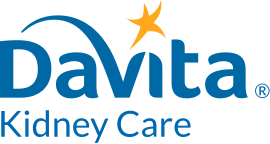Provided by DaVita® Dietitians
What’s in a name? Sometimes more than you’d expect. Foods that are fortified or enriched with calcium are usually easy to identify. However, other words and terms that indicate that a food is a significant source of calcium may not be so obvious. Keep in mind that many food labels will not display the exact quantity of calcium in milligrams. Instead, it is listed as a percentage of your recommended daily intake based on a 2,000 calorie diet.
Calcium is an essential mineral that is controlled in the diets of people on dialysis. According to the National Kidney Foundation, people with chronic kidney disease (CKD) should not exceed 2,000 mg of calcium per day. This includes not only the calcium present in food, but also that in medications and supplements such as calcium-based phosphorus binders. It’s important to work with your physician and dietitian and learn how to maintain a healthy level of calcium.
Names that secretly say, "calcium"
You will likely come across some of these names at a restaurant and in the grocery store. Here is a guide to foods that really should say "high in calcium," something that needs to be limited in a kidney diet if you are experiencing high calcium.
- Alfredo
- Au gratin
- Cappuccino
- Cheese sauce
- "Creamed" or "cream of" soups or vegetables
- Custard
- Escalloped
- Latte
- Le leche
- White sauce (hollandaise)
- Pudding
- Queso or con queso
Food containing cheese can also be high in calcium, such as:
- Cheeseburgers
- Cheese omelets
- Grilled cheese sandwiches
- Lasagna
- Macaroni and cheese
- Pizza
- Quiche
When the word "calcium" is mentioned, we often think of dairy products. But in addition to the foods in the dairy section of the supermarket, dairy can be found in some unexpected places. None of the above foods mention anything about calcium, yet they contain significant amounts of the mineral. Many of these foods are also high in phosphorus or potassium and should be avoided if you are on dialysis.
The DaVita Diet Helper can help you manage your calcium intake. Some features include:
- Kidney-friendly recipe suggestions
- Meal planning tool for daily or weekly basis
- Nutrition Log to track your food intake and see how much calcium you consume
- Print capabilities to track your food and share them with your dietitian
Summary
Calcium is often present in foods that you might not think of as calcium-rich. Keep an eye out for the foods listed above, consult nutrition labels and speak to your doctor or your dietitian about which foods to limit or avoid. By paying attention to items that might be hidden sources of calcium, you can maintain a healthier kidney diet.


